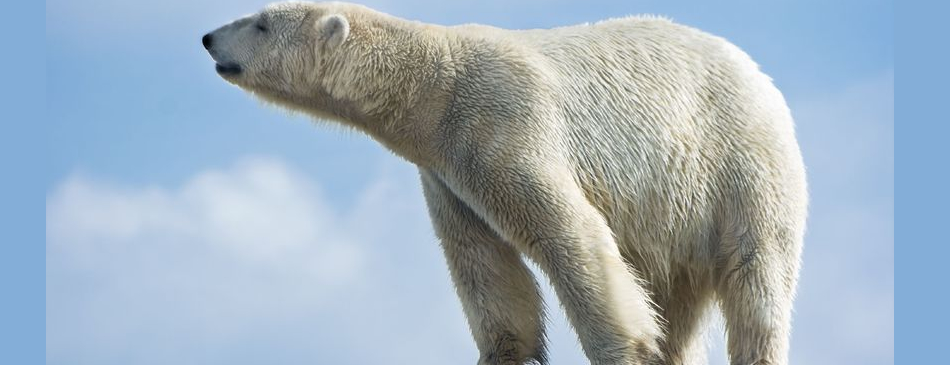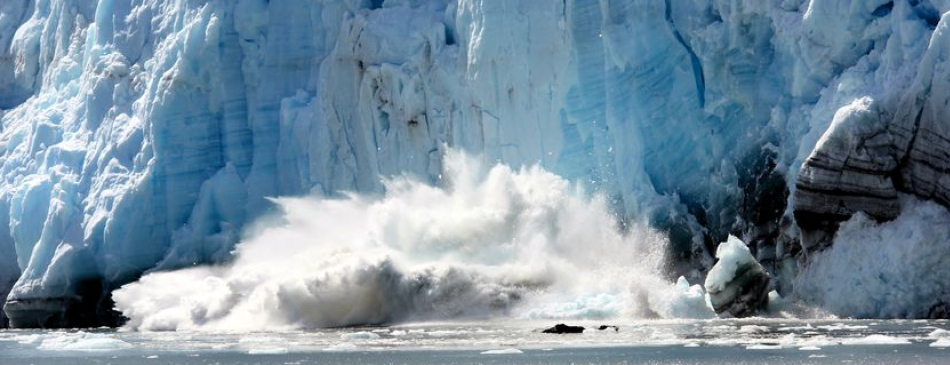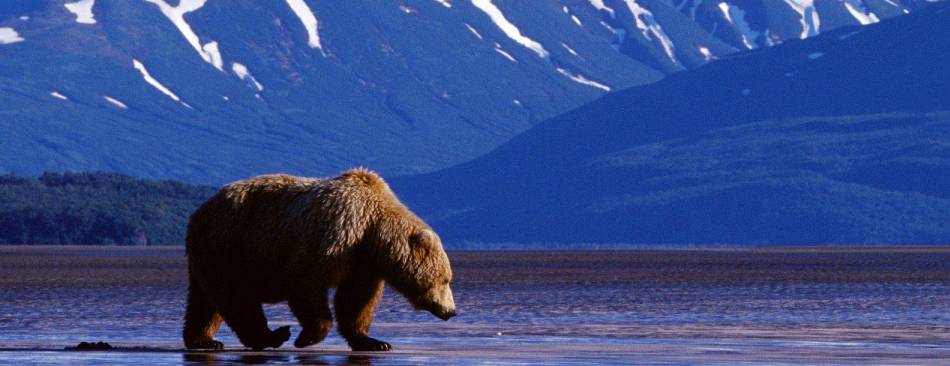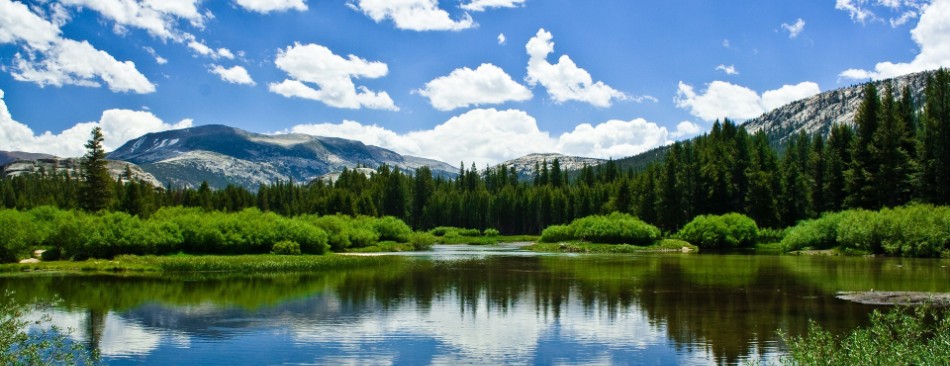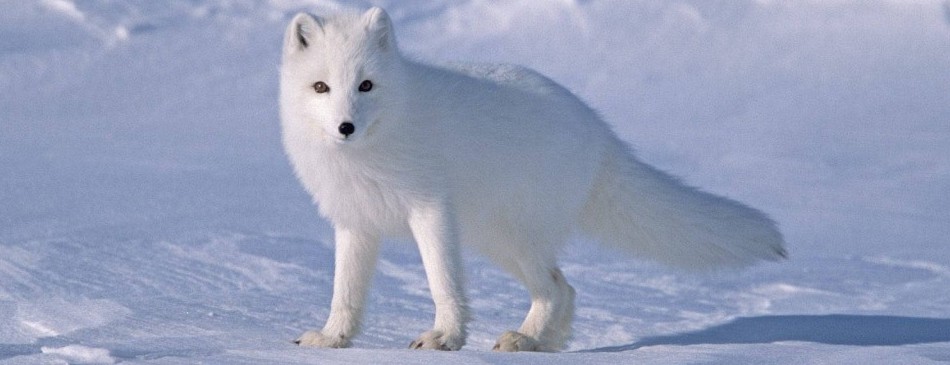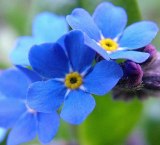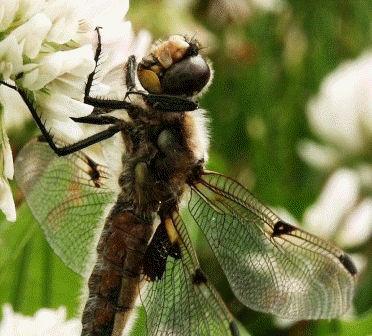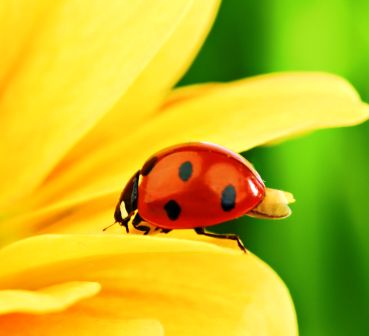Alaska's state insect is the four-spot skimmer dragonfly. The dragonfly lives in many parts of North America around lakes, ponds, bogs and slow-moving water. It eats mosquitoes, midges and black flies. Alaska gained its state insect August 24, 1995, when 11,496 Alaska school children voted from among four insects. Dragonflies live in many parts of North America around lakes, ponds, and slow-moving or still water. They eat mosquitoes, midges and black flies. It has been jokingly said that the children voted for the dragonfly because they prey on Alaska's "unofficial state bird" (the mosquito), but state representative Irene Nicholia said it was because "The dragonfly's ability to hover and fly forward and backward reminds us of the skillful maneuvering of the bush pilots in Alaska."
Although it's not one of the biggest or most colorful, it is a common dragonfly, and widespread in the State. Dragonflies are truly marvels of the natural world. They've been on this earth for about 300 million years, so they must be doing something right. Although some people are afraid of them, they do not bite or sting. Dragonflies spend their early stages in water, first as eggs, then as larvae (naiads). When they first emerge from the water, transformed into adults with wings, they are usually lighter colored, with shimmering wings. At that point, they are called tenerals. Males get almost completely black, but females keep some of that golden color. Many dragonflies change color throughout their lives, and the sexes often differ. With some species, color is variable. This can make it impossible to identify species by color alone.
The bug eating dragonfly is not Alaska's only insect. Because of they come to us, mosquitoes are perhaps the most noticeable of Alaska’s insects. Peter Adler, a professor of entomology at Clemson University who does work in Alaska, reported the possibility that more than 12 million adult mosquitoes may live above each acre of the worst-infested northern tundra. He also quoted other scientists who measured more than 600,000 black fly larvae in about three square feet of streambed.
Ground beetles are a large group of insects that can be found in a variety of habitats. Some sources list as many as 237 species in the state of Alaska. Coloration is usually black or brown, but some have striking blue or green iridescence.
Lady beetles are a well known and diverse group of primarily predaceous beetles. The beneficial status of lady beetles has been known for hundreds of years and they are considered a harbinger of good tidings in many cultures. Lady Beetles are voracious, active predators of aphids, scale insects, and other soft bodied pests. Since the early 1900’s, their populations have been encouraged and species have been introduced into new areas for control of agricultural and garden pests. In recent years, it has been shown that introduction of “foreign” species can be detrimental to the ecosystem and some introduced lady beetles tend to out-compete native species and reduce their numbers. Twenty-three species of predaceous lady beetles have been recorded from Alaska.
Yellowjackets are social wasps living in colonial nests above or below ground. Some species are nuisance pests when their stinging and scavenging behavior puts them in contact with humans. The group as a whole is considered beneficial. They are distinguished from bees by their relatively hairless bodies, obvious waist constriction, and wings that are held folded longitudinally over abdomen. Yellow jacket colonies consist of a single queen and daughter workers, and are efficient pollinators and voracious predators. Workers feed on nectar, but will eat flies, aphids, caterpillars, and other pests. The larvae are fed chewed insects by workers. The colony can consume vast numbers of insects. Mated queens over-winter in a protected site. They emerge in the spring, construct a small nest, lay eggs, and care for the developing first brood of workers. Once the workers emerge, they expand the nest, forage for food, care for the young larvae, and defend the colony. The queen then devotes all her time to laying eggs. New queens and males typically are produced in the fall. Males leave the colony, mate with new queens and die. There are 11 species of yellow jackets reported from Alaska.
Green and brown lacewings are important predators of aphids, mites, whiteflies and eggs of some economically destructive caterpillars. Several species are found in Alaska, however they are very difficult to tell apart. Fortunately, they are all beneficial and easy to identify as a group. Green lacewings are commonly found around bushes, grasses and weeds. Adults are night flyers; immatures are found on plant foliage. Adults of some species feed on soft bodied insects and others feed on honeydew, pollen or nectar. Immatures are commonly referred to as “aphid-lions”; they feed primarily on aphids and other soft-bodied insects. Brown lacewings are common in wooded areas. Green lacewings are commonly encountered in garden settings. Both adults and larvae are predaceous on soft-bodied insects.
|
|
